





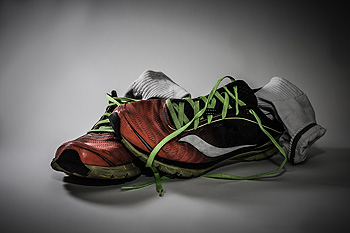 There are various common infections and diseases that you may catch at the gym if you walk around with bare feet. Athlete’s foot is a fungal infection that many people contract at the gym. If you want to avoid getting athlete’s foot, you should always make sure to wear fresh socks during workouts and change them during prolonged workout sessions to prevent fungi from breeding. Another common ailment you may contract is a plantar wart. Plantar warts are caused by the human papillomavirus (HPV). The most common way to get plantar warts is by walking barefoot in public; to avoid their development, wear flip-flops or slippers when walking in public areas. Your podiatrist can give you more information on fungal infections that affect the feet, in addition to treatment options if you are currently dealing with them.
There are various common infections and diseases that you may catch at the gym if you walk around with bare feet. Athlete’s foot is a fungal infection that many people contract at the gym. If you want to avoid getting athlete’s foot, you should always make sure to wear fresh socks during workouts and change them during prolonged workout sessions to prevent fungi from breeding. Another common ailment you may contract is a plantar wart. Plantar warts are caused by the human papillomavirus (HPV). The most common way to get plantar warts is by walking barefoot in public; to avoid their development, wear flip-flops or slippers when walking in public areas. Your podiatrist can give you more information on fungal infections that affect the feet, in addition to treatment options if you are currently dealing with them.
Everyday foot care is very important to prevent infection and other foot ailments. If you need your feet checked, contact one of our podiatrists from Active Foot and Ankle Care, LLC. Our doctors can provide the care you need to keep you pain-free and on your feet.
Everyday Foot Care
Often, people take care of their bodies, face and hair more so than they do for their feet. But the feet are a very important aspect of our bodies, and one that we should pay more attention to. Without our feet, we would not be able to perform most daily tasks.
It is best to check your feet regularly to make sure there are no new bruises or cuts that you may not have noticed before. For dry feet, moisturizer can easily be a remedy and can be applied as often as necessary to the affected areas. Wearing shoes that fit well can also help you maintain good foot health, as well as making it easier to walk and do daily activities without the stress or pain of ill-fitting shoes, high heels, or even flip flops. Wearing clean socks with closed shoes is important to ensure that sweat and bacteria do not accumulate within the shoe. Clean socks help to prevent Athlete’s foot, fungi problems, bad odors, and can absorb sweat.
If you have any questions please feel free to contact our offices located in Fair Lawn, Riverdale, and Englewood, NJ . We offer the newest diagnostic and treatment technologies for all your foot and ankle needs.
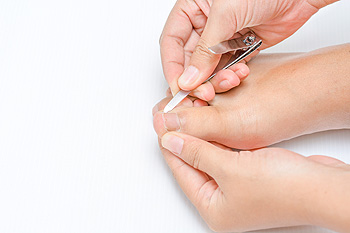 Being aware of your feet is essential in managing diabetes. Many foot conditions can develop as a result of being diabetic, including bunions, corns, foot ulcers, and blisters. Possible nerve damage may occur as a result of elevated blood sugar levels, and this may encourage a condition that is referred to as diabetic neuropathy to develop. The symptoms of this ailment may include a loss of feeling in the feet, which may often lead to unnoticed cuts and bruises that may be present. Nerve damage may cause the feet to change shape, which indicates a different size shoe should be worn. If this is not adhered to, friction may cause unwanted foot conditions to develop. Cracked skin may often be a gateway for germs to enter the body, and this may be alleviated by utilizing a moisturizing cream or lotion. If you are diabetic, it’s vital to consult with a podiatrist as quickly as possible to learn about how to properly take care of your feet.
Being aware of your feet is essential in managing diabetes. Many foot conditions can develop as a result of being diabetic, including bunions, corns, foot ulcers, and blisters. Possible nerve damage may occur as a result of elevated blood sugar levels, and this may encourage a condition that is referred to as diabetic neuropathy to develop. The symptoms of this ailment may include a loss of feeling in the feet, which may often lead to unnoticed cuts and bruises that may be present. Nerve damage may cause the feet to change shape, which indicates a different size shoe should be worn. If this is not adhered to, friction may cause unwanted foot conditions to develop. Cracked skin may often be a gateway for germs to enter the body, and this may be alleviated by utilizing a moisturizing cream or lotion. If you are diabetic, it’s vital to consult with a podiatrist as quickly as possible to learn about how to properly take care of your feet.
Diabetic foot care is important in preventing foot ailments such as ulcers. If you are suffering from diabetes or have any other concerns about your feet, contact one of our podiatrists from Active Foot and Ankle Care, LLC. Our doctors can provide the care you need to keep you pain-free and on your feet.
Diabetic Foot Care
Diabetes affects millions of people every year. The condition can damage blood vessels in many parts of the body, especially the feet. Because of this, taking care of your feet is essential if you have diabetes, and having a podiatrist help monitor your foot health is highly recommended.
The Importance of Caring for Your Feet
Patients with diabetes should have their doctor monitor their blood levels, as blood sugar levels play such a huge role in diabetic care. Monitoring these levels on a regular basis is highly advised.
It is always best to inform your healthcare professional of any concerns you may have regarding your feet, especially for diabetic patients. Early treatment and routine foot examinations are keys to maintaining proper health, especially because severe complications can arise if proper treatment is not applied.
If you have any questions please feel free to contact our offices located in Fair Lawn, Riverdale, and Englewood, NJ . We offer the newest diagnostic and treatment technologies for all your foot and ankle needs.
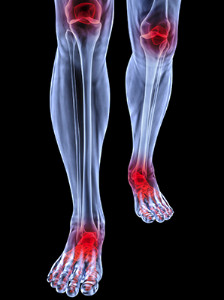 Rheumatoid Arthritis occurs when the immune system attacks the joints and causes pain and inflammation. Symptoms of RA tend to come and go, and you may have flare-ups when your symptoms are worse than usual. People with this condition commonly experience symptoms in their feet. The main symptom of RA is joint pain. This pain is typically described as a “throbbing” or “aching” sensation that is worse in the mornings or after a period of inactivity. Another common sign is joint stiffness that makes moving your joints difficult. This stiffness may occur in the morning, but if it occurs longer than a half hour, you should see your podiatrist immediately.
Rheumatoid Arthritis occurs when the immune system attacks the joints and causes pain and inflammation. Symptoms of RA tend to come and go, and you may have flare-ups when your symptoms are worse than usual. People with this condition commonly experience symptoms in their feet. The main symptom of RA is joint pain. This pain is typically described as a “throbbing” or “aching” sensation that is worse in the mornings or after a period of inactivity. Another common sign is joint stiffness that makes moving your joints difficult. This stiffness may occur in the morning, but if it occurs longer than a half hour, you should see your podiatrist immediately.
Because RA affects more than just your joints, including the joints in your feet and ankles, it is important to seek early diagnosis from your podiatrist if you feel like the pain in your feet might be caused by RA. For more information, contact one of our podiatrists of Active Foot and Ankle Care, LLC. Our doctors will assist you with all of your podiatric concerns.
What Is Rheumatoid Arthritis?
Rheumatoid Arthritis (RA) is an autoimmune disorder in which the body’s own immune system attacks the membranes surrounding the joints. Inflammation of the lining and eventually the destruction of the joint’s cartilage and bone occur, causing severe pain and immobility.
Rheumatoid Arthritis of the Feet
Although RA usually attacks multiple bones and joints throughout the entire body, almost 90 percent of cases result in pain in the foot or ankle area.
Symptoms
Diagnosis
Quick diagnosis of RA in the feet is important so that the podiatrist can treat the area effectively. Your doctor will ask you about your medical history, occupation, and lifestyle to determine the origin of the condition. Rheumatoid Factor tests help to determine if someone is affected by the disease.
If you have any questions please feel free to contact our offices located in Fair Lawn, Riverdale, and Englewood, NJ . We offer the newest diagnostic and treatment technologies for all your foot and ankle needs.
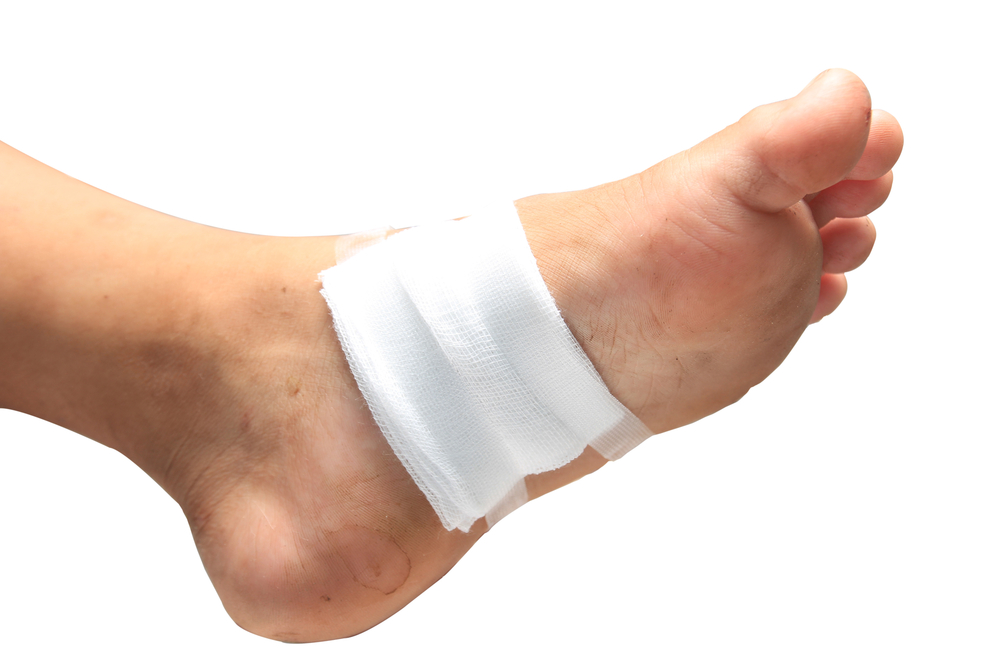 If you have developed the condition known as diabetes, you may be susceptible to wounds that form on the feet. Abnormally high glucose levels may cause difficulty in healing, in addition to possibly causing poor circulation. This may lead to neuropathy, and these damaged nerves may cause a loss of feeling in the feet. If this should occur, the patient may be unable to determine the severity of any wounds that appear on the feet and may often go unnoticed. Ingrown toenails may lead to wounds on the feet as a result of the skin and surrounding area breaking down. There are several symptoms of diabetic wounds, including tenderness, inflammation, or a discharge coming from the affected area. It’s suggested to consult with a podiatrist who can properly assist you regarding any wounds on the feet.
If you have developed the condition known as diabetes, you may be susceptible to wounds that form on the feet. Abnormally high glucose levels may cause difficulty in healing, in addition to possibly causing poor circulation. This may lead to neuropathy, and these damaged nerves may cause a loss of feeling in the feet. If this should occur, the patient may be unable to determine the severity of any wounds that appear on the feet and may often go unnoticed. Ingrown toenails may lead to wounds on the feet as a result of the skin and surrounding area breaking down. There are several symptoms of diabetic wounds, including tenderness, inflammation, or a discharge coming from the affected area. It’s suggested to consult with a podiatrist who can properly assist you regarding any wounds on the feet.
Wound care is an important part in dealing with diabetes. If you have diabetes and a foot wound or would like more information about wound care for diabetics, consult with one of our podiatrists from Active Foot and Ankle Care, LLC. Our doctors will assess your condition and provide you with quality foot and ankle treatment.
What Is Wound Care?
Wound care is the practice of taking proper care of a wound. This can range from the smallest to the largest of wounds. While everyone can benefit from proper wound care, it is much more important for diabetics. Diabetics often suffer from poor blood circulation which causes wounds to heal much slower than they would in a non-diabetic.
What Is the Importance of Wound Care?
While it may not seem apparent with small ulcers on the foot, for diabetics, any size ulcer can become infected. Diabetics often also suffer from neuropathy, or nerve loss. This means they might not even feel when they have an ulcer on their foot. If the wound becomes severely infected, amputation may be necessary. Therefore, it is of the upmost importance to properly care for any and all foot wounds.
How to Care for Wounds
The best way to care for foot wounds is to prevent them. For diabetics, this means daily inspections of the feet for any signs of abnormalities or ulcers. It is also recommended to see a podiatrist several times a year for a foot inspection. If you do have an ulcer, run the wound under water to clear dirt from the wound; then apply antibiotic ointment to the wound and cover with a bandage. Bandages should be changed daily and keeping pressure off the wound is smart. It is advised to see a podiatrist, who can keep an eye on it.
If you have any questions, please feel free to contact our offices located in Fair Lawn, Riverdale, and Englewood, NJ . We offer the newest diagnostic and treatment technologies for all your foot care needs.
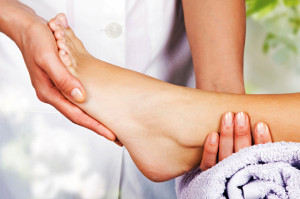 A young woman recently noticed that her toenails were slipping off her toes. She was able to find out that the reason this occurred was because of a fish pedicure she received months prior. Fish pedicures are done by placing the feet in a tub of water containing small fish called Garra rufa. These fish nibble away at calluses and rough cuticles on the skin. Unfortunately for the young women, this pedicure gave her a condition called onychomadesis. Onychomadesis is a condition that causes the nails to begin shedding. This is the first time that a fish pedicure has been found to cause onychomadesis. There are other safety hazards that have been linked to these pedicures, and many of them involve the transmission of infection.
A young woman recently noticed that her toenails were slipping off her toes. She was able to find out that the reason this occurred was because of a fish pedicure she received months prior. Fish pedicures are done by placing the feet in a tub of water containing small fish called Garra rufa. These fish nibble away at calluses and rough cuticles on the skin. Unfortunately for the young women, this pedicure gave her a condition called onychomadesis. Onychomadesis is a condition that causes the nails to begin shedding. This is the first time that a fish pedicure has been found to cause onychomadesis. There are other safety hazards that have been linked to these pedicures, and many of them involve the transmission of infection.
For more information about treatment, contact one of our podiatrists of Active Foot and Ankle Care, LLC. Our doctors can provide the care you need to keep you pain-free and on your feet.
Toenail Fungus Treatment
Toenail fungus is a condition that affects many people and can be especially hard to get rid of. Fortunately, there are several methods to go about treating and avoiding it.
Antifungals & Deterrence
Oral antifungal medicine has been shown to be effective in many cases. It is important to consult with a podiatrist to determine the proper regiment for you, or potentially explore other options.
Applying foot powder on the feet and shoes helps keep the feet free of moisture and sweat.
Sandals or open toed shoes – Wearing these will allow air movement and help keep feet dry. They also expose your feet to light, which fungus cannot tolerate. Socks with moisture wicking material also help as well.
If you have any questions please feel free to contact our offices located in Fair Lawn, Riverdale, and Englewood, NJ . We offer the newest diagnostic tools and technology to treat your foot and ankle needs.
 Ingrown toenails are a common condition that often produces easily identifiable symptoms. These may include the skin becoming red as a result of the corner of the nail growing into it, in addition to a discharge oozing from the nail. General causes for this condition may be from cutting the toenails improperly, wearing shoes that fit poorly, or suffering an injury like stubbing your toe. If this ailment is not treated in a timely fashion, a serious infection may develop, potentially requiring prolonged medical attention from a podiatrist. It’s suggested to schedule a consultation as quickly as possible for the discussion of proper treatment options, so as to avoid exacerbating the condition.
Ingrown toenails are a common condition that often produces easily identifiable symptoms. These may include the skin becoming red as a result of the corner of the nail growing into it, in addition to a discharge oozing from the nail. General causes for this condition may be from cutting the toenails improperly, wearing shoes that fit poorly, or suffering an injury like stubbing your toe. If this ailment is not treated in a timely fashion, a serious infection may develop, potentially requiring prolonged medical attention from a podiatrist. It’s suggested to schedule a consultation as quickly as possible for the discussion of proper treatment options, so as to avoid exacerbating the condition.
Ingrown toenails can become painful if they are not treated properly. For more information about ingrown toenails, contact one of our podiatrists of Active Foot and Ankle Care, LLC. Our doctors can provide the care you need to keep you pain-free and on your feet.
Ingrown Toenails
Ingrown toenails occur when a toenail grows sideways into the bed of the nail, causing pain, swelling, and possibly infection.
Causes
Prevention
Because ingrown toenails are not something found outside of shoe-wearing cultures, going barefoot as often as possible will decrease the likeliness of developing ingrown toenails. Wearing proper fitting shoes and using proper cutting techniques will also help decrease your risk of developing ingrown toenails.
Treatment
Ingrown toenails are a very treatable foot condition. In minor cases, soaking the affected area in salt or antibacterial soaps will not only help with the ingrown nail itself, but also help prevent any infections from occurring. In more severe cases, surgery is an option. In either case, speaking to your podiatrist about this condition will help you get a better understanding of specific treatment options that are right for you.
If you have any questions please feel free to contact our offices located in Fair Lawn, Riverdale, and Englewood, NJ . We offer the newest diagnostic and treatment technologies for all your foot and ankle needs.
Read more about Ingrown Toenail Care It’s common for most women to experience swollen feet during their pregnancy. It’s considered normal for both feet to be affected, but your doctor should be contacted promptly if only one foot is swollen. There are several effective ways that may aid in reducing a portion of the swelling. These may include elevating your feet and legs frequently during the day, preferably above heart level. Additionally, performing foot and ankle stretches may help to pump excess fluid from the feet and legs. Many women have found that wearing compression stockings may help swollen feet from becoming worse during the day. Research has shown that limiting salt intake and drinking plenty of fresh water frequently may aid in the reduction of excess fluid, which often contributes to swollen feet during pregnancy.
It’s common for most women to experience swollen feet during their pregnancy. It’s considered normal for both feet to be affected, but your doctor should be contacted promptly if only one foot is swollen. There are several effective ways that may aid in reducing a portion of the swelling. These may include elevating your feet and legs frequently during the day, preferably above heart level. Additionally, performing foot and ankle stretches may help to pump excess fluid from the feet and legs. Many women have found that wearing compression stockings may help swollen feet from becoming worse during the day. Research has shown that limiting salt intake and drinking plenty of fresh water frequently may aid in the reduction of excess fluid, which often contributes to swollen feet during pregnancy.
Pregnant women with swollen feet can be treated with a variety of different methods that are readily available. For more information about other cures for swollen feet during pregnancy, consult with one of our podiatrists from Active Foot and Ankle Care, LLC. Our doctors will attend to all of your foot and ankle needs.
What Foot Problems Can Arise During Pregnancy?
One problem that can occur is overpronation, which occurs when the arch of the foot flattens and tends to roll inward. This can cause pain and discomfort in your heels while you’re walking or even just standing up, trying to support your baby.
Another problem is edema, or swelling in the extremities. This often affects the feet during pregnancy but tends to occur in the later stages.
How Can I Keep My Feet Healthy During Pregnancy?
If you have any questions please feel free to contact our offices located in Fair Lawn, Riverdale, and Englewood, NJ . We offer the newest diagnostic and treatment technologies for all your foot and ankle needs.
Read more about Pregnancy and Foot HealthWhen a baby is born, their feet are padded and very flexible. Research has shown that toddlers have flat feet until they begin to walk, which typically happens between 8 and 18 months of age. When walking begins, it’s important for the child to wear a shoe with a soft sole which may enable them to feel the ground as they learn to walk. A stronger shoe can be introduced once they consistently walk and have improved muscle strength. When fitted for shoes, it’s beneficial to measure the length and width of the foot which can assist in choosing the correct shoe size. Research has shown this process needs to be repeated every few months as a result of the rapid growth that most children experience. Please schedule a consultation with a podiatrist if you find your child is walking “pigeon-toed” or noticing if the feet are turning outward.
Making sure that your children maintain good foot health is very important as they grow. If you have any questions, contact one of our podiatrists of Active Foot and Ankle Care, LLC. Our doctors can provide the care you need to keep you pain-free and on your feet.
Keeping Children's Feet Healthy
Having healthy feet during childhood can help prevent medical problems later in life, namely in the back and legs. As children grow, their feet require different types of care. Here are some things to consider...
Although babies do not walk yet, it is still very important to take care of their feet.
Avoid putting tight shoes or socks on his or her feet.
Allow the baby to stretch and kick his or her feet to feel comfortable.
As a toddler, kids are now on the move and begin to develop differently. At this age, toddlers are getting a feel for walking, so don’t be alarmed if your toddler is unsteady or ‘walks funny’.
As your child gets older, it is important to teach them how to take care of their feet.
Show them proper hygiene to prevent infections such as fungus.
Be watchful for any pain or injury.
Have all injuries checked by a doctor as soon as possible.
Comfortable, protective shoes should always be worn, especially at play.
If you have any questions please feel free to contact our offices located in Fair Lawn, Riverdale, and Englewood, NJ . We offer the newest diagnostic and treatment technologies for all your foot and ankle needs.
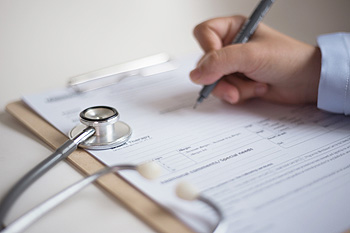 A doctor that specializes in disorders of the foot is referred to as a podiatrist. This type of doctor typically treats foot conditions including hammer toe, bunions and ingrown toenails. They may also treat foot ailments caused by birth defects such as clubfoot and flat feet. Diabetic patients often notice sores on their feet, which may heal slowly, and this may be one of the first symptoms indicating this condition exists. Within this field, there are categories specific to the type of patient that is being treated. For instance, podiatrists who specialize in sports medicine typically treat athletes. Doctors who are skilled in advanced surgery may perform foot and ankle reconstruction, which may be a necessary option after an injury. If you have any questions regarding podiatry, please consult with your podiatrist.
A doctor that specializes in disorders of the foot is referred to as a podiatrist. This type of doctor typically treats foot conditions including hammer toe, bunions and ingrown toenails. They may also treat foot ailments caused by birth defects such as clubfoot and flat feet. Diabetic patients often notice sores on their feet, which may heal slowly, and this may be one of the first symptoms indicating this condition exists. Within this field, there are categories specific to the type of patient that is being treated. For instance, podiatrists who specialize in sports medicine typically treat athletes. Doctors who are skilled in advanced surgery may perform foot and ankle reconstruction, which may be a necessary option after an injury. If you have any questions regarding podiatry, please consult with your podiatrist.
If you are dealing with pain in your feet and ankles, you may want to seek help from a podiatrist. Feel free to contact one of our podiatrists from Active Foot and Ankle Care, LLC. Our doctors can provide the care you need to keep you pain-free and on your feet.
What Is a Podiatrist?
A podiatrist is a doctor of podiatric medicine who diagnoses and treats conditions of the foot, ankle, and related structures of the leg. Your podiatrist may specialize in a certain field such as sports medicine, wound care, pediatrics, and diabetic care. Podiatrists have the ability to become board certified through training, clinical experience, and then taking an exam.
What Do Podiatrists Do?
On a daily basis, a podiatrist may perform the following activities:
It is very important that you take care of your feet. It’s easy to take having healthy feet for granted, however foot problems tend to be among the most common health conditions. Podiatrists can help diagnose and treat a variety of feet related conditions, so it is crucial that you visit one if you need assistance.
If you have any questions please feel free to contact our offices located in Fair Lawn, Riverdale, and Englewood, NJ . We offer the newest diagnostic and treatment technologies for all your foot and ankle needs.
 A condition referred to as cuboid syndrome may have similar symptoms as those associated with an ankle sprain. Additionally, the discomfort and pain may be felt on the outside of the ankle and many patients overcompensate by rolling the arches inward. The bone that is called the cuboid bone is found on the outside of the foot, and dislocation may occur from an ankle injury. Treatment may typically consist of aligning the bone correctly in addition to applying tape and adequate padding which may keep the bone from slipping out of place. A condition that is often associated with this ailment is called peroneal tendonitis, which is an inflammation of the tendons that run behind the cuboid bone. For patients who are afflicted with peroneal tendonitis, a rehabilitation program may be suggested which may aid in gradual healing. Please consult with a podiatrist if additional information is required about cuboid syndrome.
A condition referred to as cuboid syndrome may have similar symptoms as those associated with an ankle sprain. Additionally, the discomfort and pain may be felt on the outside of the ankle and many patients overcompensate by rolling the arches inward. The bone that is called the cuboid bone is found on the outside of the foot, and dislocation may occur from an ankle injury. Treatment may typically consist of aligning the bone correctly in addition to applying tape and adequate padding which may keep the bone from slipping out of place. A condition that is often associated with this ailment is called peroneal tendonitis, which is an inflammation of the tendons that run behind the cuboid bone. For patients who are afflicted with peroneal tendonitis, a rehabilitation program may be suggested which may aid in gradual healing. Please consult with a podiatrist if additional information is required about cuboid syndrome.
Cuboid syndrome, also known as cuboid subluxation, occurs when the joints and ligaments near the cuboid bone in the foot become torn. If you have cuboid syndrome, consult with one of our podiatrists from Active Foot and Ankle Care, LLC. Our doctors will assess your condition and provide you with quality foot and ankle treatment.
Cuboid syndrome is a common cause of lateral foot pain, which is pain on the outside of the foot. The condition may happen suddenly due to an ankle sprain, or it may develop slowly overtime from repetitive tension through the bone and surrounding structures.
Causes
The most common causes of cuboid syndrome include:
Symptoms
A common symptom of cuboid syndrome is pain along the outside of the foot which can be felt in the ankle and toes. This pain may create walking difficulties and may cause those with the condition to walk with a limp.
Diagnosis
Diagnosis of cuboid syndrome is often difficult, and it is often misdiagnosed. X-rays, MRIs and CT scans often fail to properly show the cuboid subluxation. Although there isn’t a specific test used to diagnose cuboid syndrome, your podiatrist will usually check if pain is felt while pressing firmly on the cuboid bone of your foot.
Treatment
Just as the range of causes varies widely, so do treatments. Some more common treatments are ice therapy, rest, exercise, taping, and orthotics.
If you have any questions, please feel free to contact our offices located in Fair Lawn, Riverdale, and Englewood, NJ . We offer the newest diagnostic and treatment technologies for all your foot care needs.
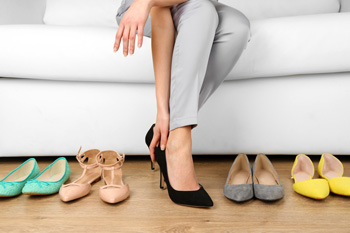 Those who wear high heels are aware of the pain they cause. However, the minor pain you endure while wearing heels can lead to more serious foot ailments over time. It has been found that wearing high heels may cause extra pressure to be placed on your joints. Heels cause the natural alignment of your feet to be thrown out of balance, since they are forced into an angled position. When you wear high heels, your body weight is channeled to the ball of your foot and the tip of your heel. Consequently, extra pressure is placed on your joints which may lead to them feeling stiff and painful. Walking around in high heels also causes you to overarch your back. This may be harmful to your spine if it is done for an extended period of time. If you still choose to wear heels, you should limit the amount of days you wear them per week. If you suspect that you have foot pain as a result of wearing heels, you should consult with your podiatrist right away.
Those who wear high heels are aware of the pain they cause. However, the minor pain you endure while wearing heels can lead to more serious foot ailments over time. It has been found that wearing high heels may cause extra pressure to be placed on your joints. Heels cause the natural alignment of your feet to be thrown out of balance, since they are forced into an angled position. When you wear high heels, your body weight is channeled to the ball of your foot and the tip of your heel. Consequently, extra pressure is placed on your joints which may lead to them feeling stiff and painful. Walking around in high heels also causes you to overarch your back. This may be harmful to your spine if it is done for an extended period of time. If you still choose to wear heels, you should limit the amount of days you wear them per week. If you suspect that you have foot pain as a result of wearing heels, you should consult with your podiatrist right away.
High heels have a history of causing foot and ankle problems. If you have any concerns about your feet or ankles, contact one of our podiatrists from Active Foot and Ankle Care, LLC. Our doctors can provide the care you need to keep you pain-free and on your feet.
Effects of High Heels on the Feet
High heels are popular shoes among women because of their many styles and societal appeal. Despite this, high heels can still cause many health problems if worn too frequently.
Which Parts of My Body Will Be Affected by High Heels?
What Kinds of Foot Problems Can Develop from Wearing High Heels?
How Can I Still Wear High Heels and Maintain Foot Health?
If you want to wear high heeled shoes, make sure that you are not wearing them every day, as this will help prevent long term physical problems. Try wearing thicker heels as opposed to stilettos to distribute weight more evenly across the feet. Always make sure you are wearing the proper shoes for the right occasion, such as sneakers for exercising. If you walk to work, try carrying your heels with you and changing into them once you arrive at work. Adding inserts to your heels can help cushion your feet and absorb shock. Full foot inserts or metatarsal pads are available.
If you have any questions please feel free to contact our offices located in Fair Lawn, Riverdale, and Englewood, NJ . We offer the newest diagnostic and treatment technologies for all your foot and ankle needs.
Read more about Effect of High Heels on the Feet There are many different signs that you may have an ingrown toenail. If you have an ingrown toenail, you may notice pain when you apply pressure to the area. Other symptoms include skin inflammation, fluid build-up, bleeding, or pus in the affected area. Thankfully, there are ways you can prevent ingrown toenails from developing in the future. It is advised to keep your feet clean by washing them with soap and water. In addition, you try changing your socks on a regular basis. Another tip is to cut your toenails straight across to stop them from digging into the skin that surrounds them. Lastly, you should try wearing shoes that fit properly. In severe cases, surgery may be performed to treat an ingrown toenail. These surgeries are known as partial nail avulsion and total nail avulsion. In partial nail avulsion, part of the toenail is removed; in total nail avulsion, the whole toenail is removed. If you have any questions, concerns, or are experiencing any symptoms regarding ingrown toenails, a consultation with a podiatrist is advised.
There are many different signs that you may have an ingrown toenail. If you have an ingrown toenail, you may notice pain when you apply pressure to the area. Other symptoms include skin inflammation, fluid build-up, bleeding, or pus in the affected area. Thankfully, there are ways you can prevent ingrown toenails from developing in the future. It is advised to keep your feet clean by washing them with soap and water. In addition, you try changing your socks on a regular basis. Another tip is to cut your toenails straight across to stop them from digging into the skin that surrounds them. Lastly, you should try wearing shoes that fit properly. In severe cases, surgery may be performed to treat an ingrown toenail. These surgeries are known as partial nail avulsion and total nail avulsion. In partial nail avulsion, part of the toenail is removed; in total nail avulsion, the whole toenail is removed. If you have any questions, concerns, or are experiencing any symptoms regarding ingrown toenails, a consultation with a podiatrist is advised.
Ingrown toenails may initially present themselves as a minor discomfort, but they may progress into an infection in the skin without proper treatment. For more information about ingrown toenails, contact one of our podiatrists of Active Foot and Ankle Care, LLC. Our doctors can provide the care you need to keep you pain-free and on your feet.
Ingrown Toenails
Ingrown toenails are caused when the corner or side of a toenail grows into the soft flesh surrounding it. They often result in redness, swelling, pain, and in some cases, infection. This condition typically affects the big toe and may recur if it is not treated properly.
Causes
You are more likely to develop an ingrown toenail if you are obese, have diabetes, arthritis, or have any fungal infection in your nails. Additionally, people who have foot or toe deformities are at a higher risk of developing an ingrown toenail.
Symptoms
Some symptoms of ingrown toenails are redness, swelling, and pain. In rare cases, there may be a yellowish drainage coming from the nail.
Treatment
Ignoring an ingrown toenail can have serious complications. Infections of the nail border can progress to a deeper soft-tissue infection, which can then turn into a bone infection. You should always speak with your podiatrist if you suspect you have an ingrown toenail, especially if you have diabetes or poor circulation.
If you have any questions, please feel free to contact our offices located in Fair Lawn, Riverdale, and Englewood, NJ . We offer the newest diagnostic and treatment technologies for all your foot care needs.
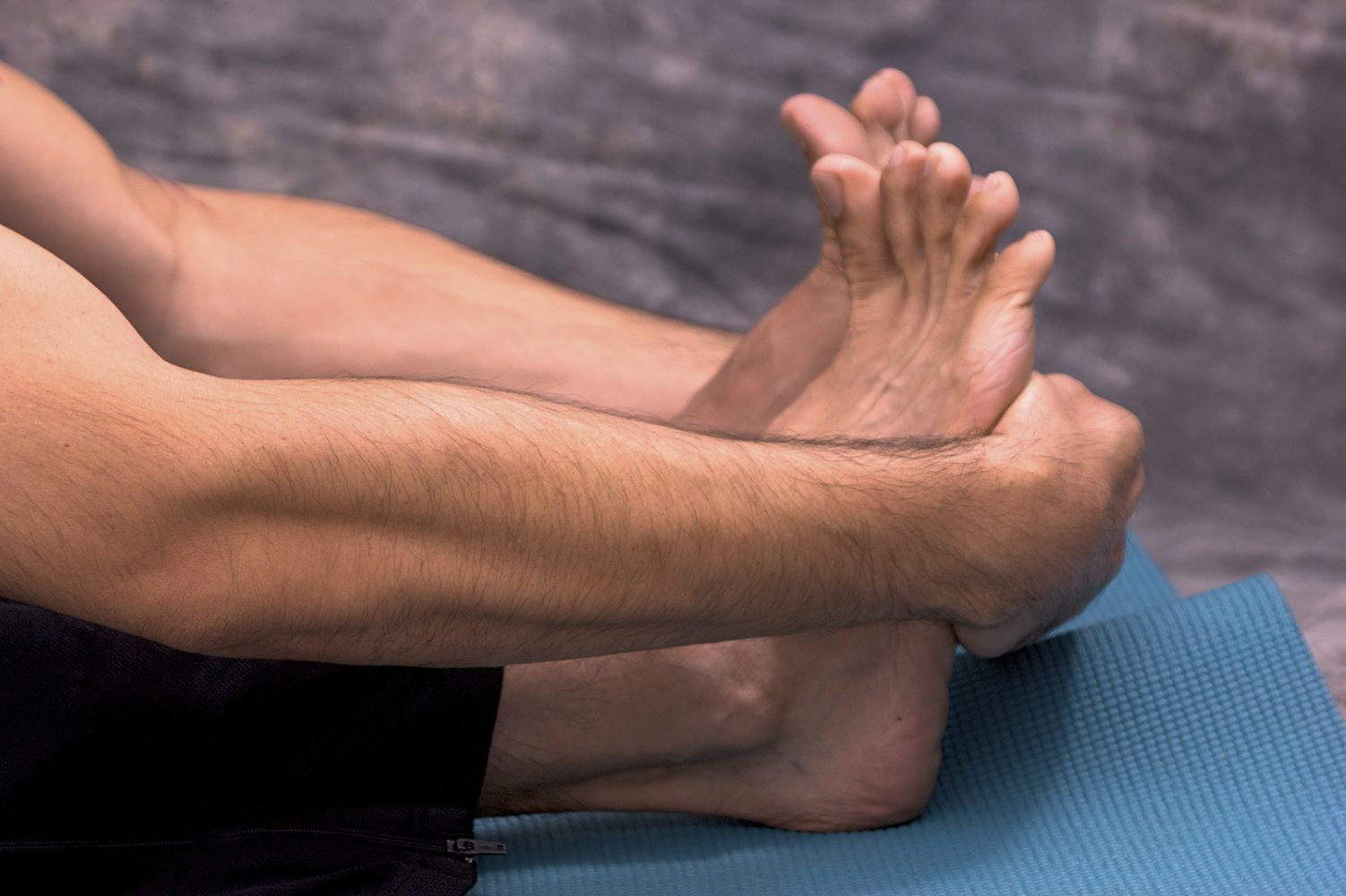 When proper foot stretches are performed, the body may become stronger, and may possibly alleviate certain aches and pains that may be present. An effective stretch that may strengthen the plantar fascia would be to interlace your fingers between your toes, and gently pull while rolling your ankle in small circles. Additionally, a stretch that simulates a massage involves using a tennis ball. When the foot is placed on top of the ball and gently rolled, the ligaments and tendons are stretched, encouraging the muscles of the foot to loosen. A popular foot stretch is known as flexing the foot. While sitting down, hold your foot in your hands and gently pull into an arch. The benefits of this effective stretch include improved strength in the toes in addition to possibly preventing any foot spasms from occurring. Please consult a podiatrist for additional information about the positive effects of proper foot stretching.
When proper foot stretches are performed, the body may become stronger, and may possibly alleviate certain aches and pains that may be present. An effective stretch that may strengthen the plantar fascia would be to interlace your fingers between your toes, and gently pull while rolling your ankle in small circles. Additionally, a stretch that simulates a massage involves using a tennis ball. When the foot is placed on top of the ball and gently rolled, the ligaments and tendons are stretched, encouraging the muscles of the foot to loosen. A popular foot stretch is known as flexing the foot. While sitting down, hold your foot in your hands and gently pull into an arch. The benefits of this effective stretch include improved strength in the toes in addition to possibly preventing any foot spasms from occurring. Please consult a podiatrist for additional information about the positive effects of proper foot stretching.
Stretching the feet is a great way to prevent injuries. If you have any concerns with your feet consult with one of our podiatrists from Active Foot and Ankle Care, LLC. Our doctors will assess your condition and provide you with quality foot and ankle treatment.
Stretching the Feet
Being the backbone of the body, the feet carry your entire weight and can easily become overexerted, causing cramps and pain. As with any body part, stretching your feet can serve many benefits. From increasing flexibility to even providing some pain relief, be sure to give your feet a stretch from time to time. This is especially important for athletes or anyone performing aerobic exercises, but anyone experiencing foot pain or is on their feet constantly should also engage in this practice.
Great ways to stretch your feet:
Individuals who tend to their feet by regular stretching every day should be able to minimize foot pain and prevent new problems from arising.
If you have any questions, please feel free to contact our offices located in Fair Lawn, Riverdale, and Englewood, NJ . We offer the newest diagnostic and treatment technologies for all your foot care needs.
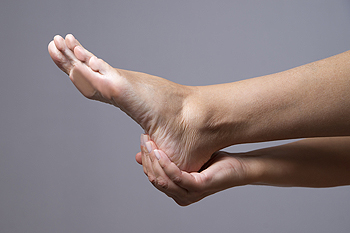 There are several causes of heel pain, and one of these conditions may be referred to as plantar fasciitis. If you choose to wear shoes that are not fitting properly, the foot may undergo severe pain because of the damage that may be inflicted on the plantar fascia ligament. This tissue connects the heel to the base of the toes, and if tearing occurs due to overuse, the result is very painful. Many athletes often endure this type of injury, which typically may be caused from running distances without executing proper stretching and training exercises. Additionally, genetics may be a factor in developing this ailment, which may often affect the structure of the foot. The pain that is experienced is usually described as achiness in the arch or center of the heel, with the pain being the worst in the morning after a night of slumber. It’s suggested that performing proper stretching techniques may help prevent this condition from occurring. If you are afflicted with plantar fasciitis, consider scheduling a consultation with a podiatrist to learn about correct treatment methods.
There are several causes of heel pain, and one of these conditions may be referred to as plantar fasciitis. If you choose to wear shoes that are not fitting properly, the foot may undergo severe pain because of the damage that may be inflicted on the plantar fascia ligament. This tissue connects the heel to the base of the toes, and if tearing occurs due to overuse, the result is very painful. Many athletes often endure this type of injury, which typically may be caused from running distances without executing proper stretching and training exercises. Additionally, genetics may be a factor in developing this ailment, which may often affect the structure of the foot. The pain that is experienced is usually described as achiness in the arch or center of the heel, with the pain being the worst in the morning after a night of slumber. It’s suggested that performing proper stretching techniques may help prevent this condition from occurring. If you are afflicted with plantar fasciitis, consider scheduling a consultation with a podiatrist to learn about correct treatment methods.
Plantar fasciitis is a common foot condition that is often caused by a strain injury. If you are experiencing heel pain or symptoms of plantar fasciitis, contact one of our podiatrists from Active Foot and Ankle Care, LLC. Our doctors can provide the care you need to keep you pain-free and on your feet.
What Is Plantar Fasciitis?
Plantar fasciitis is one of the most common causes of heel pain. The plantar fascia is a ligament that connects your heel to the front of your foot. When this ligament becomes inflamed, plantar fasciitis is the result. If you have plantar fasciitis you will have a stabbing pain that usually occurs with your first steps in the morning. As the day progresses and you walk around more, this pain will start to disappear, but it will return after long periods of standing or sitting.
What Causes Plantar Fasciitis?
There are some risk factors that may make you more likely to develop plantar fasciitis compared to others. The condition most commonly affects adults between the ages of 40 and 60. It also tends to affect people who are obese because the extra pounds result in extra stress being placed on the plantar fascia.
Prevention
There are a variety of treatment options available for plantar fasciitis along with the pain that accompanies it. Additionally, physical therapy is a very important component in the treatment process. It is important that you meet with your podiatrist to determine which treatment option is best for you.
If you have any questions, please feel free to contact our offices located in Fair Lawn, Riverdale, and Englewood, NJ . We offer the newest diagnostic and treatment technologies for all your foot care needs.






